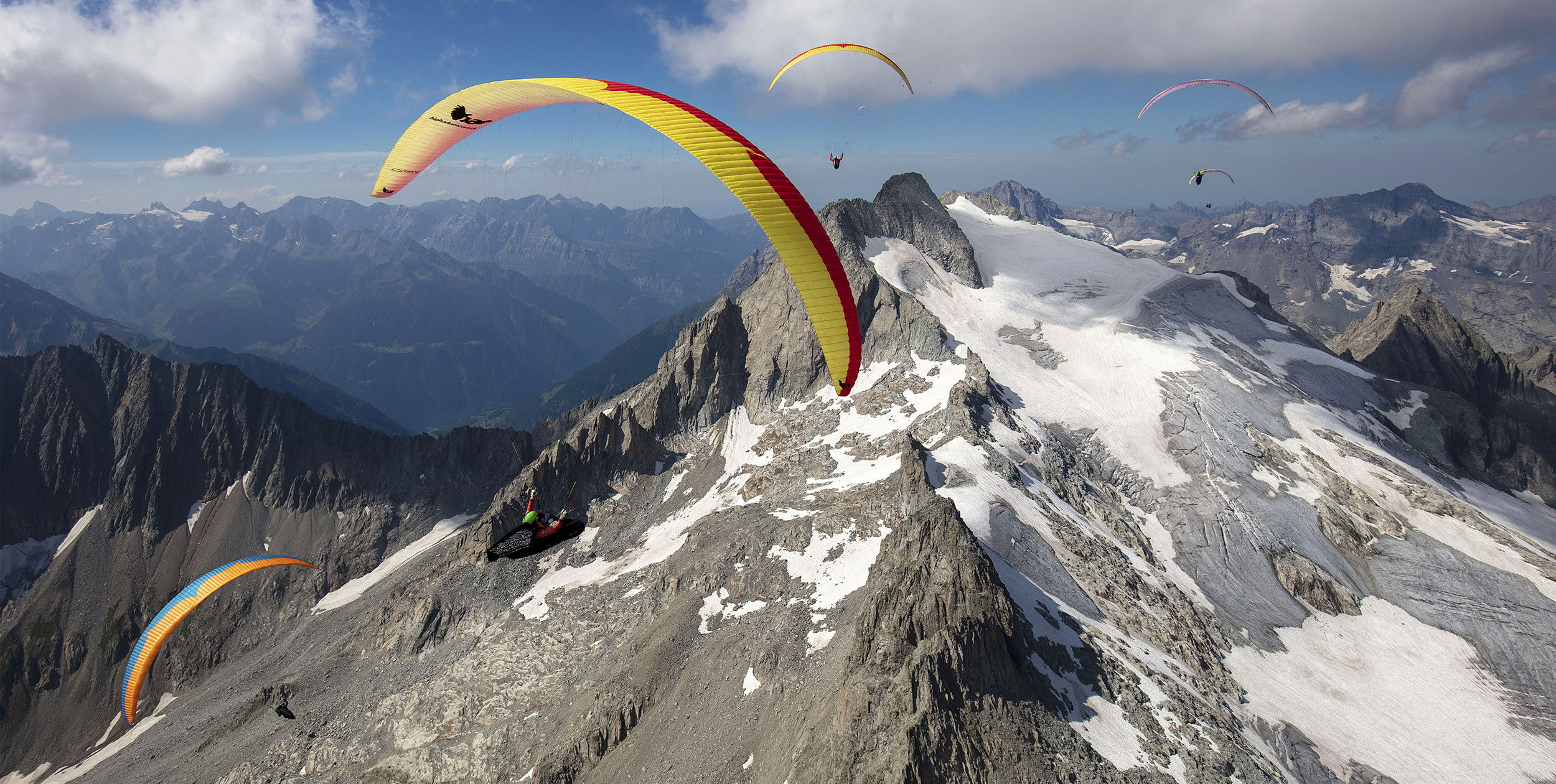
As you start building more experience with your mountain flying you’ll find that flying in the lee is commonplace. It’s a great skill to have in your toolbox, but if you’re new to it there are a few things you should consider before diving in. Malin Lobb explains.
Turbulent air
As soon as we embark on our cross-country careers all we do is fly in turbulence. In fact we actively seek it out: thermals cause turbulence and on an active day turbulence is everywhere.
What you should learn to discern as a pilot is what level of turbulence you are comfortable with and what level matches your active piloting skills. For example, if you are happy in a 3m/s thermal then you will probably be happy with the leeside turbulence you find from up to 10km/h meteo wind. If you are happy in a 5m/s thermal then you will probably be able to handle the leeside turbulence from 15km/h meteo wind, and so on.
These figures are by no means definitive, I am just using them as an example. My limit is between 25-30km/h: at that level you can expect it to be quite uncomfortable and you will be catching big collapses. It is definitely not something I choose to do very often.
Once you’ve figured out your threshold for when you should and shouldn’t venture into the lee, what else should you look out for?
Avoiding sharp edges
That’s just generally good life advice but when it comes to flying in lee it’s important. By the time you’re flying cross country you should know that sharp edges create more turbulence than smooth corners. If you were going to dive into the lee and you see a sharp cliff-edge you need to take a wider berth than if the mountain was more rounded. Remember, the turbulence will be stronger the closer you get to the edge.
Once you have taken a wide berth around the edge of the mountain of maybe 100 metres or so you will start to feel some turbulence, and once you are behind the mountain you can then tuck back in and start to fly the face as normal. You should then be completely out of the leeside turbulence.
Anytime you get near the top or the edges of the mountain you will start to feel the effect again and you should increase your separation from the terrain and take a wide berth to get back into cleaner air and make your transition to the next mountain slope. In fact, once you are fully leeside and protected by the mountain you might find that the thermals are smoother than on the windward side where the thermals are mixing with the wind.
[promobox]
When to take the plunge
Just because the leeside face is in the sun it doesn’t mean that it’s going to work. If the day has just switched from the east to west faces but the thermals aren’t strong enough yet on the west face to combat the wind you might find that the meteo wind is flushing over the mountain and down and all you will find is a massive amount of sink if you venture onto the face too early.
The same is also true towards the end of the day. As the thermals start to weaken off, at some point the meteo wind will not be held back any longer and the leeside face will become very sinky.
Keeping an eye on your height
Just because the meteo wind is 10km/h and within your comfort zone it doesn’t mean all the lee you will find will be. When you start to go below a certain height you will enter the valley breeze influence and the winds could easily be 25-30km/h and catch you by surprise.
So as you start to expand your flying horizons in the mountains, here’s the recap to cut out and keep:
- Don’t venture into the lee side if the meteo wind will create turbulence beyond your skill level.
- As you go behind the mountain and into the lee go wide and create more separation between you and the terrain. Make sure you don’t stay too far away for too long or else you won’t find the best lift. You can tuck back in towards the mountainside as soon as you feel the turbulence starts to subside, after 100-200m.
- Stay away from sharp edges. Whether it’s a sharper edge or stronger wind, both mean you should give more separation to the terrain as you enter the lee.
- Once you are protected by the mountainside fly as you would normally. Just be aware if you are coming towards the top or the sides of the mountain you will no longer be in the protective bubble. If the mountain is conical shaped (like a cone) then the wind will sweep around both sides and there might be no protective bubble. If that is the case then you may well find some strong convergence away from the slope where the two wind masses meet, but that is another story.
- Don’t jump onto the leeside face too early as the thermals need to become strong enough to combat the meteo wind.
Most of all have fun, if you’re not enjoying it, don’t do it!
Malin Lobb is a paragliding and SIV instructor at Flyeo in Annecy, France, flyeo.com. This article was first published in Cross Country 221 (July 2021).











